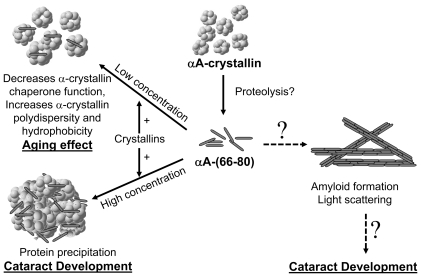Figure 8. Schematic of αA-(66-80) peptide–mediated lens aging and cataract development.
In vivo αA-(66-80) peptides interact with crystallins and affect the structure and organization of crystallins, leading to age-related changes and cataract development. At low concentrations, αA-(66-80) specifically interacts with α-crystallin, resulting in increased hydrophobicity and polydispersity and decreased chaperone activity of α-crystallin. At higher concentrations, αA-(66-80) binds to crystallins, leading to insolubilization of crystallins and cataract development. Localized accumulation of the αA-(66-80) peptide has the potential to form light-scattering amyloid-like structures. However, the latter is less likely because the interaction of the peptide with crystallins suppresses the formation of fibrils.

